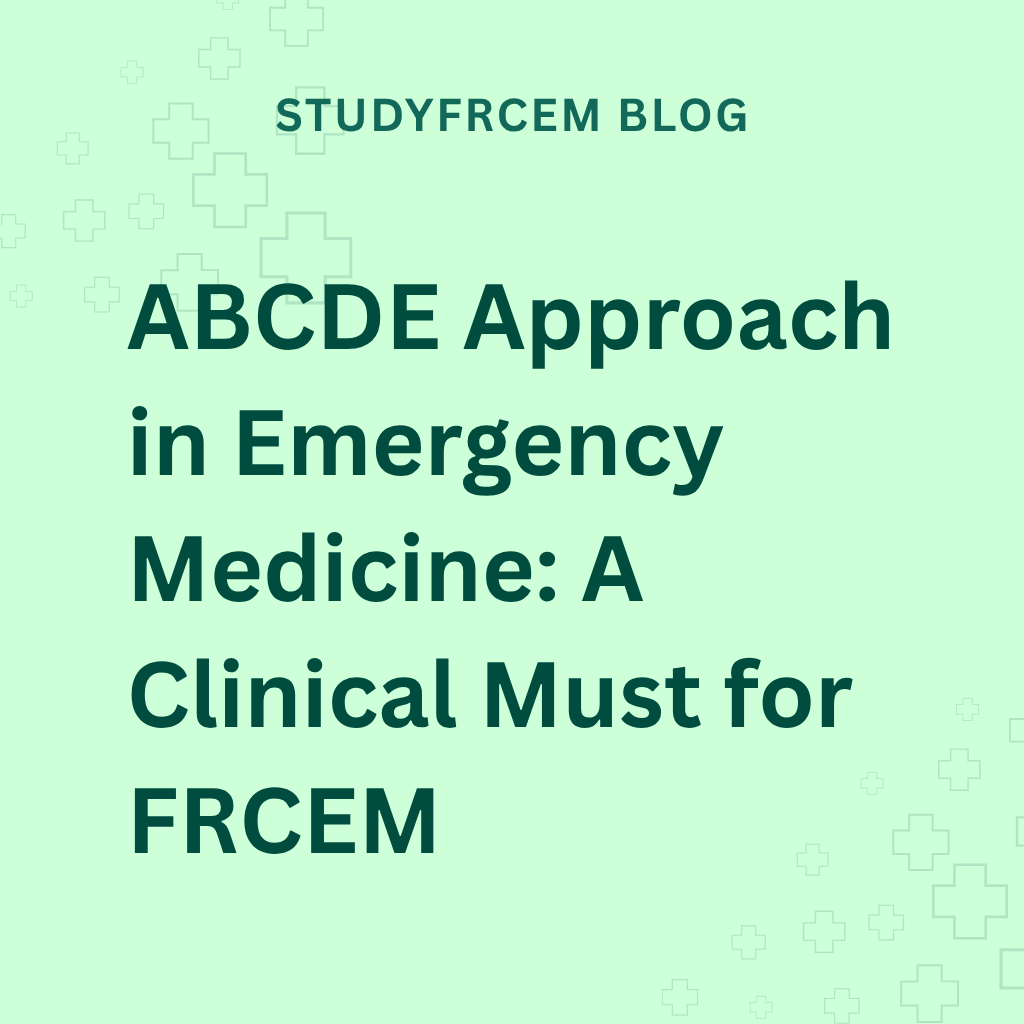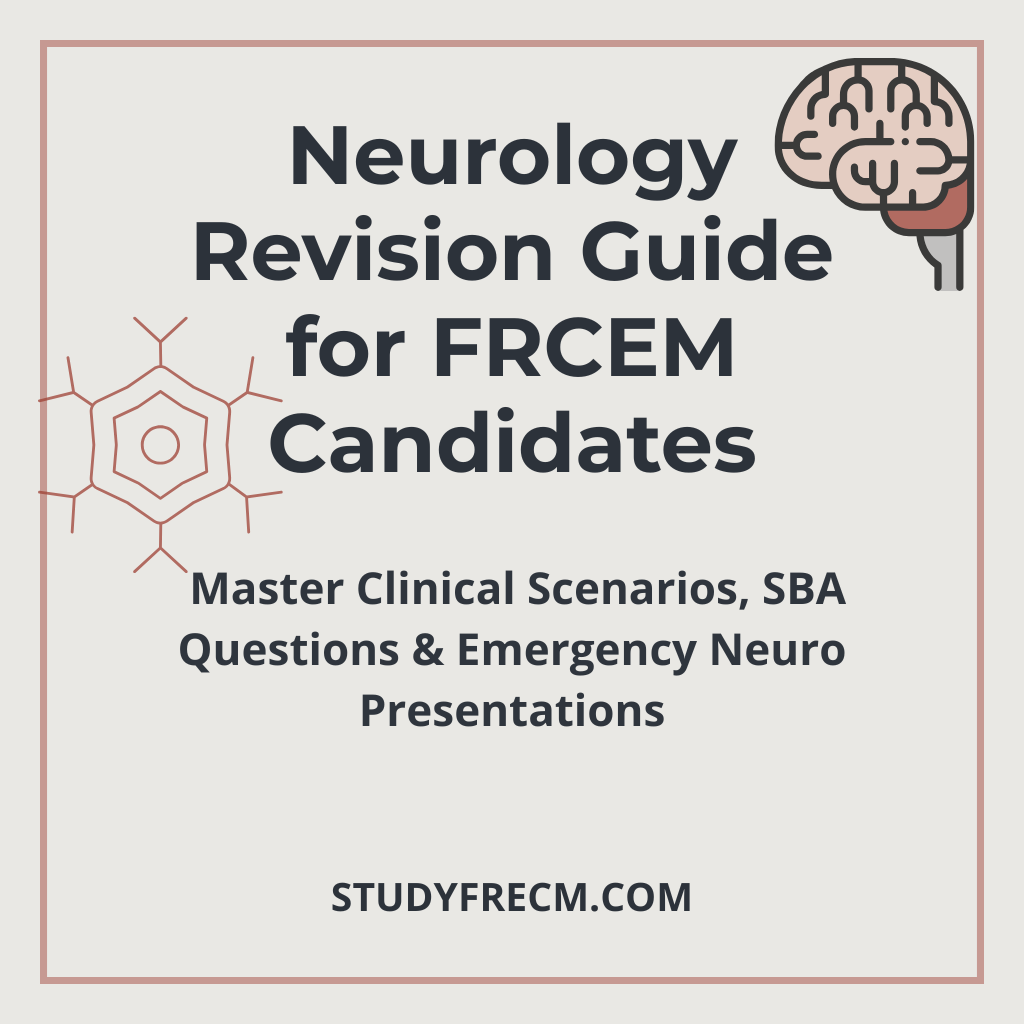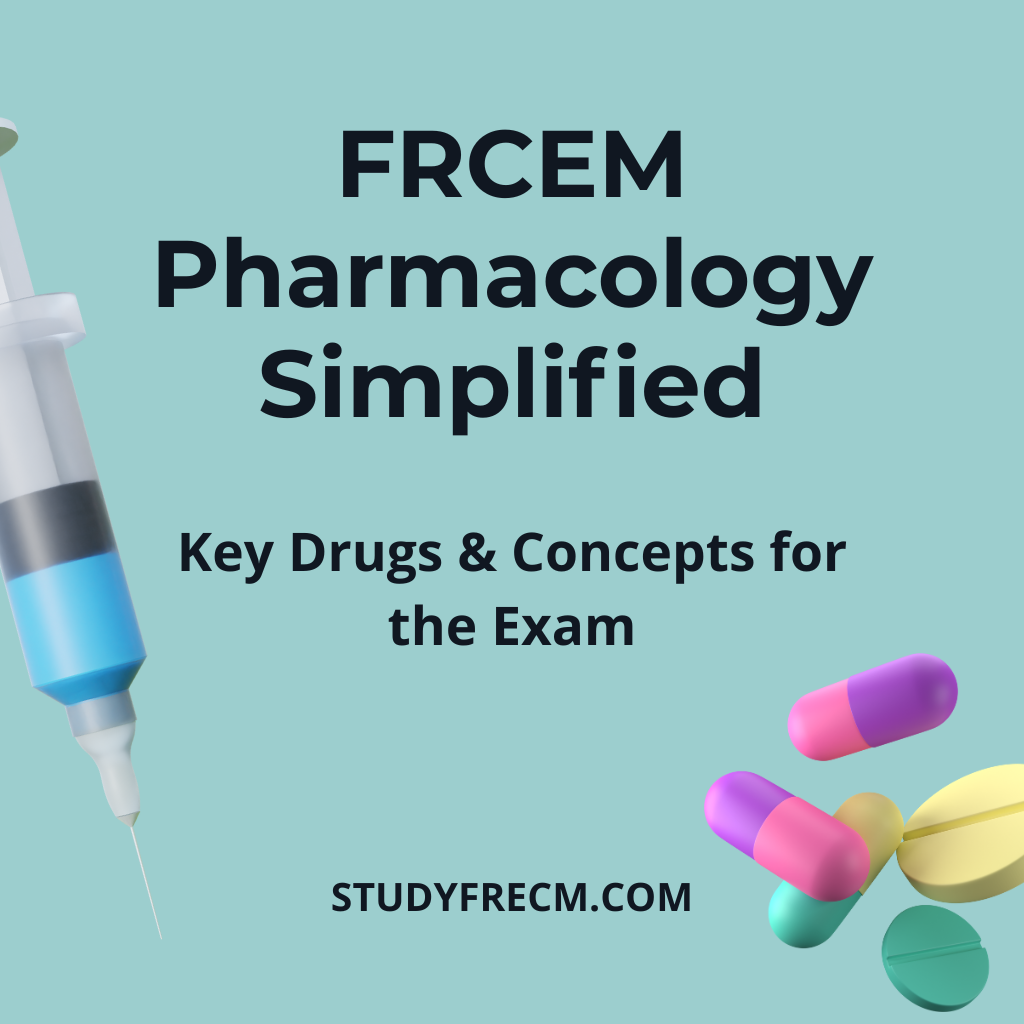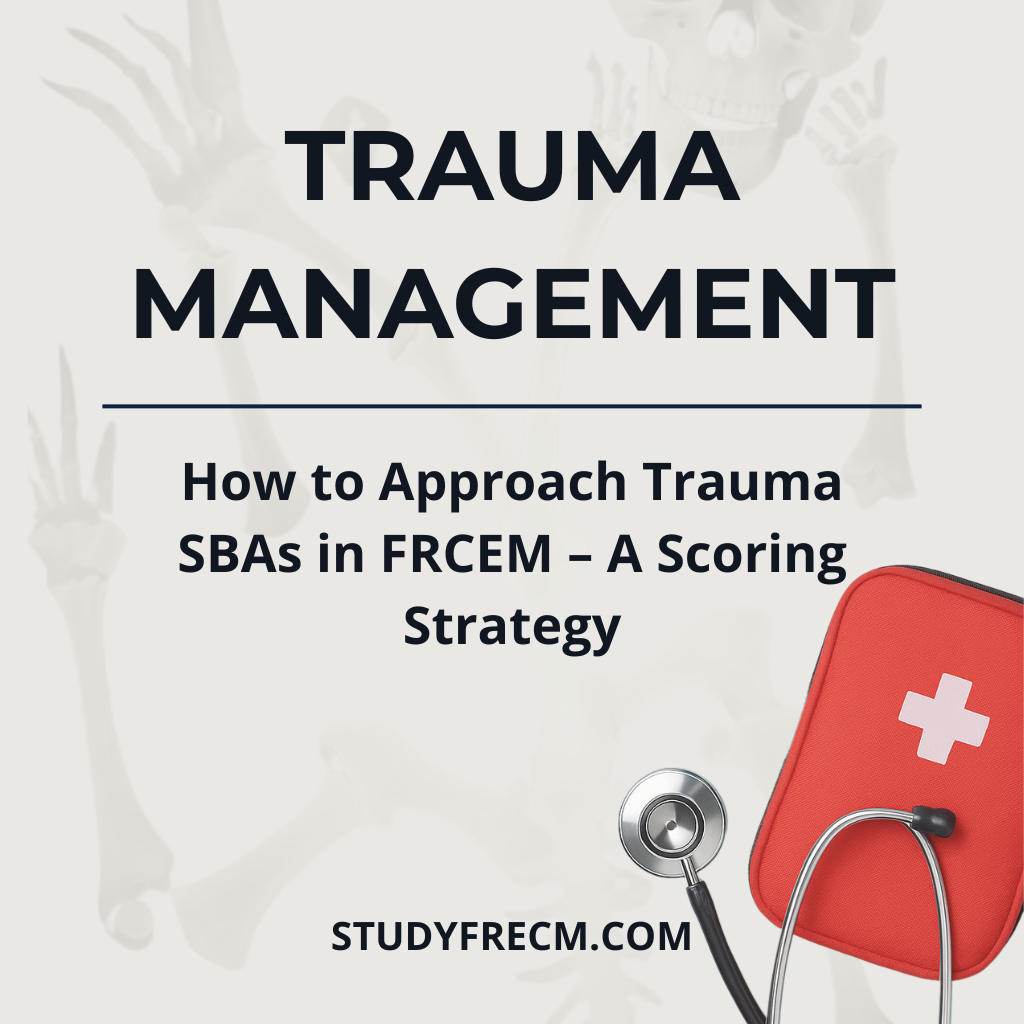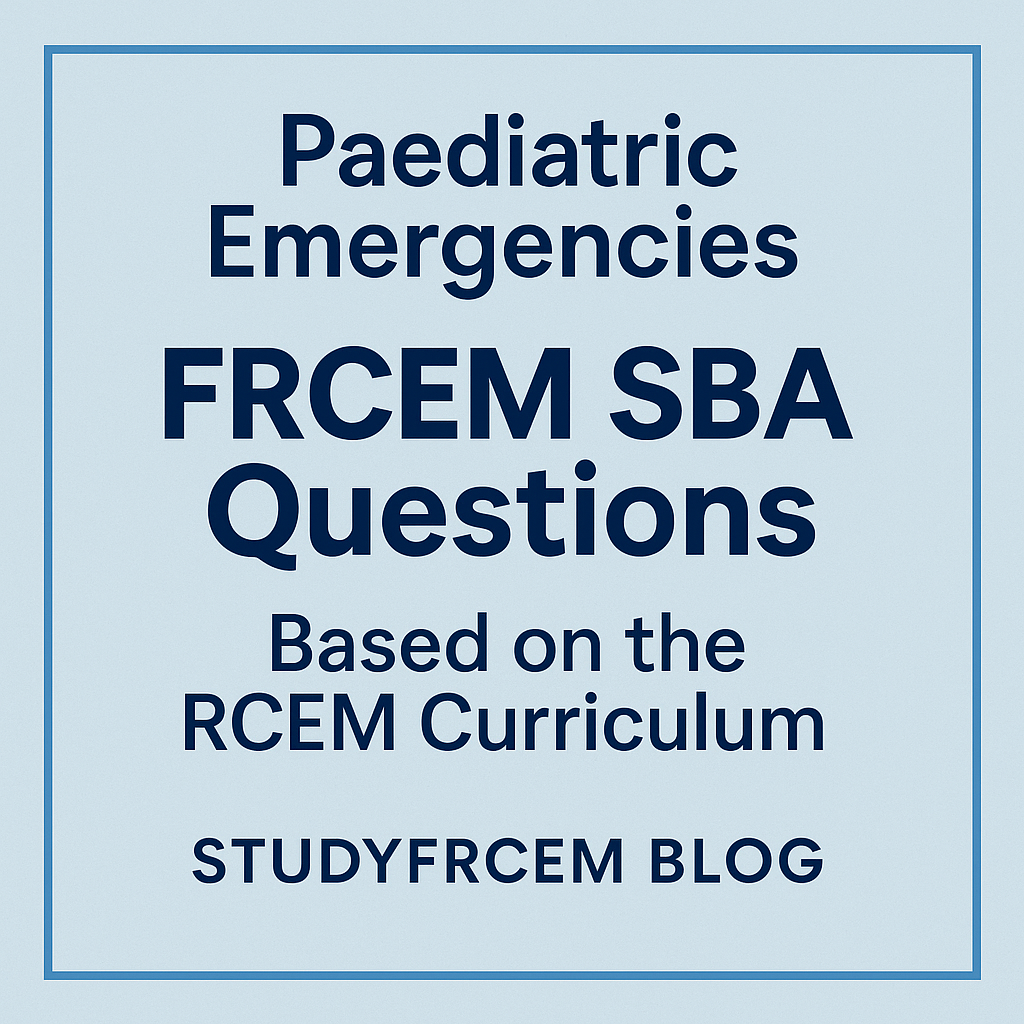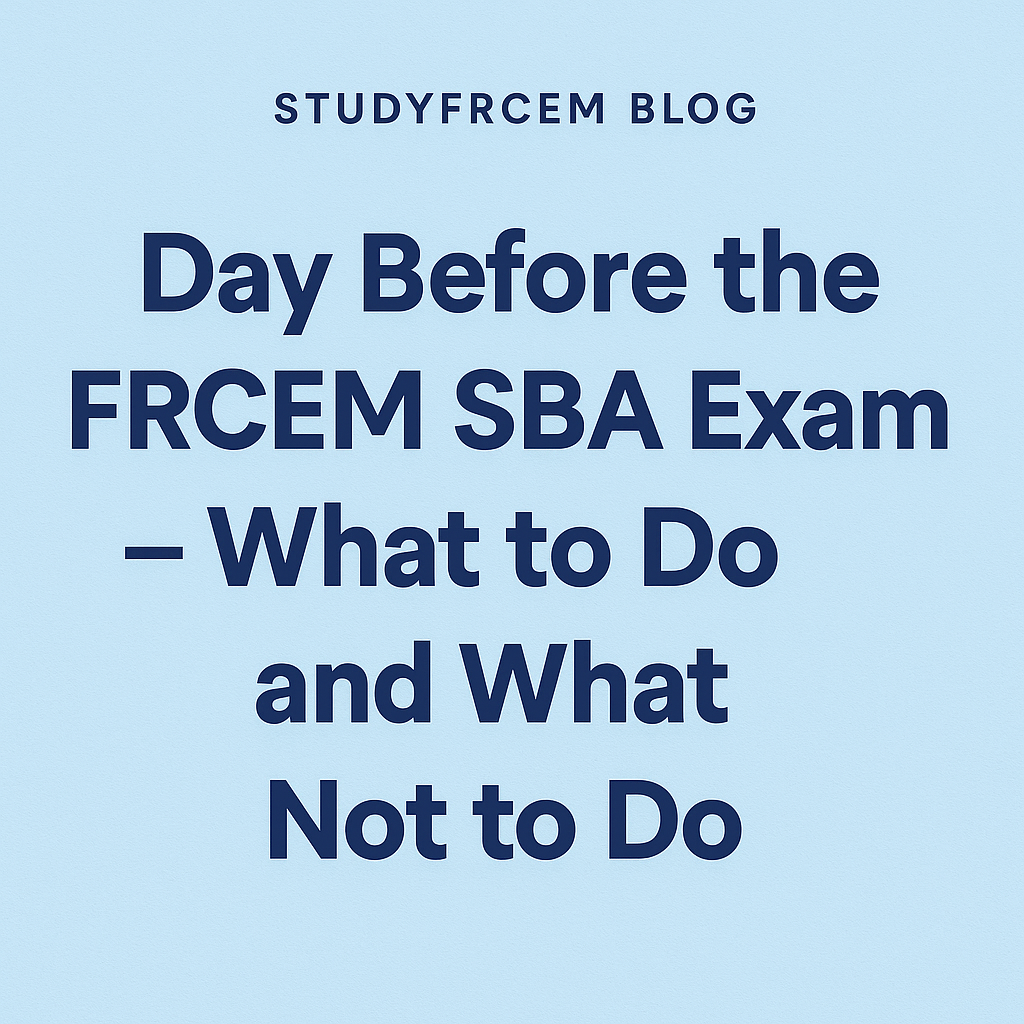In emergency medicine, clinical efficiency, structure, and rapid decision-making are the cornerstones of saving lives. The ABCDE approach is a globally recognized method that ensures systematic patient assessment, identifying and managing life-threatening conditions in order of priority.
If you're preparing for the FRCEM (Fellowship of the Royal College of Emergency Medicine) exam, a complete understanding of the ABCDE approach is essential. Not only does it frequently appear in exam scenarios, but it also plays a critical role in real-world clinical practice. This guide will help you master the ABCDE methodology, step-by-step, with insights tailored for FRCEM success.
A - Airway
The airway is the priority in any emergency assessment. An obstructed airway can rapidly lead to hypoxia and death.
What to Assess:
- Is the patient speaking? If so, the airway is patent.
- Are there sounds like stridor, gurgling, or snoring?
- Are there visible obstructions like vomit, blood, or foreign bodies?
Interventions:
- Use a head-tilt chin-lift or jaw thrust (if trauma is suspected).
- Remove obstructions manually or via suction.
- Insert an oropharyngeal (Guedel) or nasopharyngeal airway if necessary.
- If basic airway maneuvers fail, consider advanced airway techniques such as intubation.
FRCEM Clinical Tip:
Airway assessment isn't complete without addressing cervical spine protection in trauma patients. Always assume spinal injury until proven otherwise.
B - Breathing
Once the airway is secure, assess the patient's ability to oxygenate and ventilate.
What to Assess:
- Respiratory rate, rhythm, and effort
- Oxygen saturation (SpO2)
- Chest symmetry and movement
- Breath sounds using auscultation
- Signs of respiratory distress: cyanosis, use of accessory muscles
Common Emergencies to Recognize:
- Tension pneumothorax
- Massive hemothorax
- Flail chest
- Pulmonary embolism
- Severe asthma or COPD exacerbation
Interventions:
- Administer high-flow oxygen via a non-rebreather mask
- Decompress tension pneumothorax with a needle in the 2nd intercostal space midclavicular line
- Support breathing with bag-valve-mask (BVM) or mechanical ventilation if needed
FRCEM SBA Example:
A patient presents with tracheal deviation, hypotension, and absent breath sounds on the left side. What is your immediate next step?
Correct Answer: Perform emergency needle decompression.
C - Circulation
Once breathing is addressed, evaluate the patient's circulatory status to detect shock, bleeding, or cardiac compromise.
What to Assess:
- Pulse (rate, rhythm, strength)
- Blood pressure
- Capillary refill time (<2 seconds is normal)
- Skin color and temperature
- Signs of external or internal bleeding
- Jugular venous pressure (JVP) if applicable
- Heart sounds and ECG
Common Conditions:
- Hypovolemic shock due to hemorrhage
- Cardiogenic shock (e.g., myocardial infarction)
- Obstructive shock (e.g., cardiac tamponade, pulmonary embolism)
Interventions:
- Control external bleeding with direct pressure or tourniquets
- Establish two large-bore IV lines
- Initiate fluid resuscitation (e.g., crystalloids or blood products as needed)
- Consider ECG and cardiac monitoring in all critically ill patients
FRCEM Clinical Tip:
Always assess for hidden bleeding in trauma: pelvic fractures, long bones, abdominal cavity, and chest.
D - Disability (Neurological Status)
A rapid neurological assessment helps identify conditions such as stroke, hypoglycemia, or increased intracranial pressure.
What to Assess:
- Level of consciousness using AVPU or GCS (Glasgow Coma Scale)
- Pupil size, equality, and reactivity to light
- Blood glucose (hypoglycemia can mimic neurological compromise)
Common Causes of Altered Mental Status:
- Head injury
- Hypoxia or hypercapnia
- Stroke
- Seizures
- Hypoglycemia
- Overdose or poisoning
Interventions:
- Administer glucose if hypoglycemia is detected
- Protect the airway in unconscious patients
- Treat seizures with benzodiazepines
- Consider naloxone if opioid overdose is suspected
FRCEM Tip:
Don’t forget the blood sugar check – it's a fast, reversible cause that can save lives and marks in the exam!
E - Exposure / Environment
Finally, expose the patient fully to identify hidden injuries or clinical signs while maintaining their body temperature.
What to Assess:
- Rashes, wounds, bruising, deformities
- Limb injuries, burns, or bites
- Medical alert bracelets or tattoos
- Signs of abuse or neglect
Interventions:
- Undress the patient completely (log roll if trauma is suspected)
- Use warming blankets, fluid warmers
- Look for evidence of infection, trauma, or other abnormalities
FRCEM Clinical Tip:
Patients lose body heat quickly in emergency settings. Prevent hypothermia, especially in children and trauma victims.
Why ABCDE is Essential for FRCEM
In the FRCEM exam, candidates are often presented with scenarios where the ABCDE approach must be applied under time pressure. Questions might include:
- What is your next step in management?
- Which part of the assessment is missing?
- Interpretation of vital signs and clinical findings
By internalizing this framework, you not only improve your exam performance but also your real-world decision-making skills.
Clinical Scenario: Putting ABCDE Into Action
Imagine a 34-year-old male being brought to the ED after a road traffic accident. He is semi-conscious, with gurgling sounds heard from his throat.
- A: Gurgling = airway obstruction. Use suction and insert an oropharyngeal airway.
- B: Respiratory rate 32, decreased air entry on left. Suspect tension pneumothorax.
- C: Hypotensive, fast thread pulse. IV fluids started and bleeding was controlled.
- D: AVPU = responds to pain. GCS is estimated at 9. Pupils equal and reactive.
- E: Remove clothing. Found to have seatbelt bruising and a femoral fracture. Keep warm.
This structured approach prevents missing critical issues and mirrors FRCEM-style assessments.
More detailed ABCDE Scenario; click here
Final Thoughts
The ABCDE approach in emergency medicine is the backbone of rapid assessment. It's logical, life-saving, and exam-tested. As a FRCEM candidate, mastering this method will not only boost your exam readiness but also your confidence on the floor.
When you think emergency medicine, think ABCDE first.
Also read: FRCEM Pharmacology Simplified: Essential Drugs and Concepts for FRCEM Primary Exam

